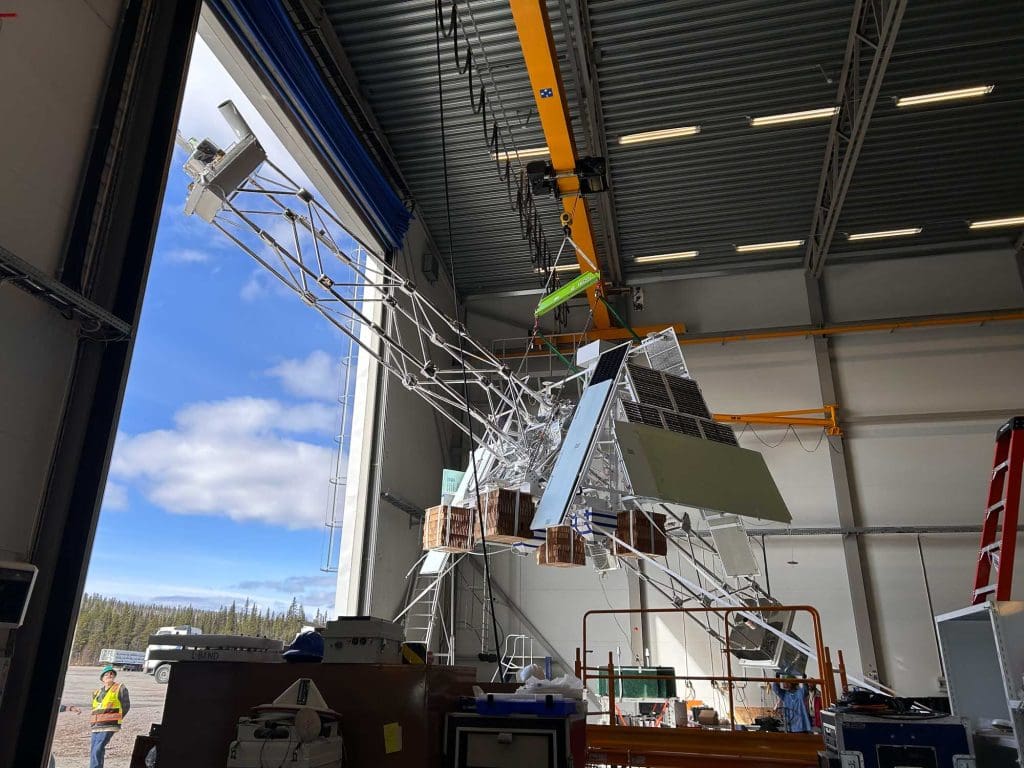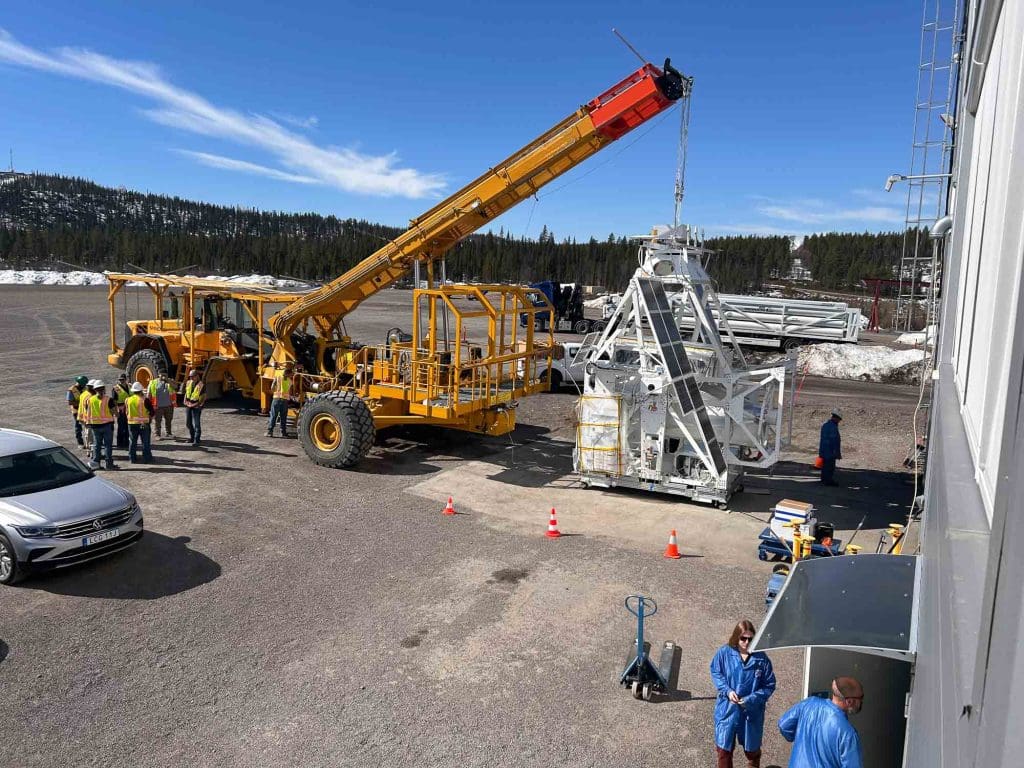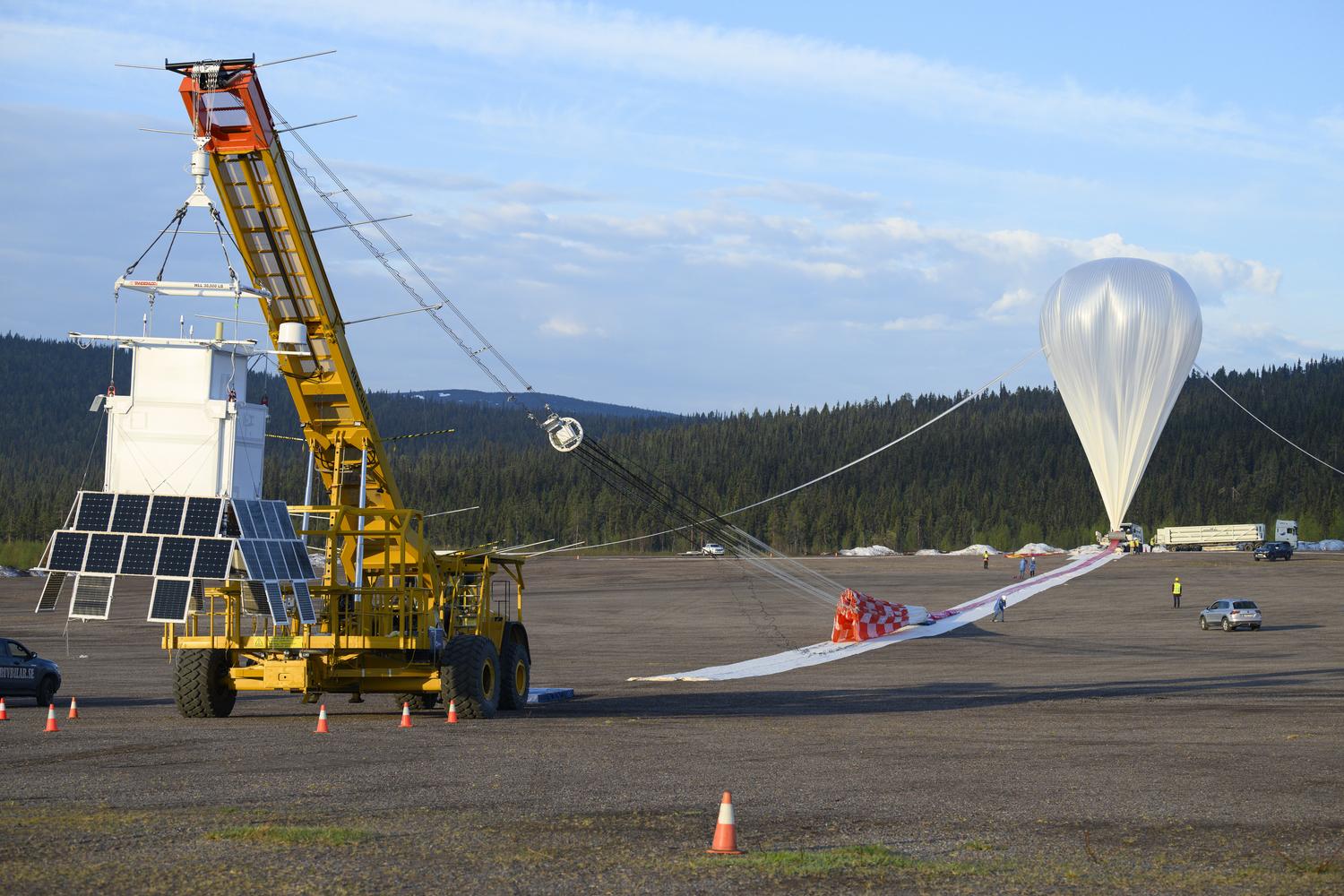Starting at the end of May, a real balloon bonanza begins at the Esrange Space Center. A total of eight balloons – five transatlantic and two stationary stratospheric ballons as well as one student balloon – will be launched from Esrange. This many balloons of such massive size, have never been launched from Esrange in such a short period of time. The largest one measures a record size of thrice the volume of the Globe arena in Stockholm.
Right now, there is full activity at Esrange with preparations to launch these gigantic balloons. On site right now is NASA with a large team preparing to launch four balloons. The larger transatlantic balloons will fly from northern Sweden and land in northern Canada. The research conducted on the scientific payloads include cosmic ray, X-ray astronomy, and solar observations. The smallest of these balloons is the EXPLORA mission which aims to study climate change by conducting various measurements in the atmosphere. Participating in this collaboration is the Space High School (Rymdgymnasiet) and the Lycée de l’Espace from Toulouse in France.

When these balloons will be launched depends on the weather and the stratospheric winds, but they will likely take place from May 25th. In the beginning of June, the NASA team will be accompanied by a French team from CNES who will start preparing their three balloons to be launched during June.
The facilities at Esrange are well-reputed internationally when it comes to launching larger stratospheric balloons. Only a few locations worldwide have such capabilities.
“We are proud to have these top-of-the-line facilities for launching stratospheric balloons here at Esrange. And we have built up an impressive experience from many years of close collaboration with international well-known actors such as NASA and CNES. This manifests our position in the very top of international ballooning,” says Lennart Poromaa, President of Science and Launch Services at SSC.

For SSC’s customers, the unique competence and infrastructure at Esrange is the foundation for long and close partnerships. For example, the collaboration with NASA is still strong after 25 years.
“NASA’s Balloon Program is excited to conduct our long-duration balloon campaign from Sweden this year. Every launch we do is unique and exciting, and we’re thrilled to have our first successful launch for the season now that the wind patterns are aligned to meet our mission needs,” says Andrew Hamilton, Acting Director of NASA’s Balloon Program Office. “The program has performed balloon launches from Esrange since 1999 creating a long-standing relationship with Swedish Space Corporation (SSC) and the range. Our partnership with SSC is valuable to NASA and the scientific community by allowing us to use their high-quality facilities at Esrange. We truly appreciate the support received from range personnel and the level of professionalism and expertise that is displayed during range operations.”
“For several decades, CNES has been carrying out many stratospheric balloon flights from the Esrange base for French and European laboratories. The coming campaign includes our first transatlantic flight between Sweden and north Canada. After 2 years of technical work, we are now ready for this new challenge,” says Stéphane Louvel, Balloon campaign manager at CNES.
Ideal location for balloon launches
And there is no coincidence that balloon operations thrive in the northernmost of Sweden. The area where Esrange is located is unique in many ways. Among other things, it is almost unpopulated, which means that the flights can take place in a safe way. The launch area is also strategically positioned in terms of stratospheric winds and the fact that in late spring we have the midnight sun. This means that these enormous balloons can have constant sunlight, meaning that pressure changes and loss of gas that normally occurs when the balloon is cooled and heated can be minimized.
Furthermore, flying balloons from Esrange in a westerly direction means that you can achieve longer flight duration and thereby get longer measurement intervals for the various instruments onboard the balloons.
“The location of the range is important to NASA because it provides a unique opportunity to safely launch and then fly long-duration missions for several days in the northern hemisphere before landing in Canada. This long-duration capability is crucial to our science missions so that they can gather as much data as possible over the course of the flight.” says Andrew Hamilton.

NASA:s balloons during 2024 campaign
HELIX: An experiment with a powerful superconducting magnet which is measuring the flux of high-energy cosmic ray isotopes. The measurements will help determine the age of cosmic rays in our galaxy. Launched on the 28th of May, the 3,402 kg payload flies on a 970,000 m3 balloon at 36 km altitude. Follow the balloon real-time at: https://www.csbf.nasa.gov/map/balloon7/Flight738N.htm
BOOMS: A high-resolution imager of X-rays from energetic electron microbursts that appear in the polar atmosphere. The 748 kg payload will fly on a 1,7 million m3 balloon at 47 km altitude – the largest balloon ever at Esrange. This is a test flight set to qualify the balloon for reaching altitudes greater than 45,7 km (150,000 ft), which is higher than NASA’s current stratospheric inventory.
SUNRISE-III: A solar observatory that takes high-resolution imaging and spectro-polarimetry of layers of the sun called the solar photosphere and chromosphere, and active regions to measure magnetic field, temperature, and velocities with high height temporal resolution. The 3,515 kg payload will fly on a 970,000 m3 balloon at 36 km altitude.
XL-Calibur: A telescope that will observe a sample of galactic black hole and neutron star sources to gain new insight on how these objects accelerate electrons and emit X-rays. The 2,722 kg payload will fly on a 1,12 million m3 balloon at 38 km altitude.
CNES’s balloons during 2024 campaign
TRANSAT: A balloon mission consisting of a total of nine different scientific experiments, focusing on concentration of greenhouse gases. The 890 kg payload will fly on a 800,000 m3 balloon at 40 km altitude.
SAPHERALLER: A balloon mission consisting of a total of twelve different scientific experiments, focusing on composition of clouds. The 250 kg payload will fly on a 100,000 m3 balloon especially at 18 km altitude.
ATMOSFER: A balloon mission consisting of a total of four different scientific experiments, focusing on atmospheric chemistry and aerosol measurements. The 553 kg payload will fly on a 150,000 m3 balloon at 33 km altitude.

